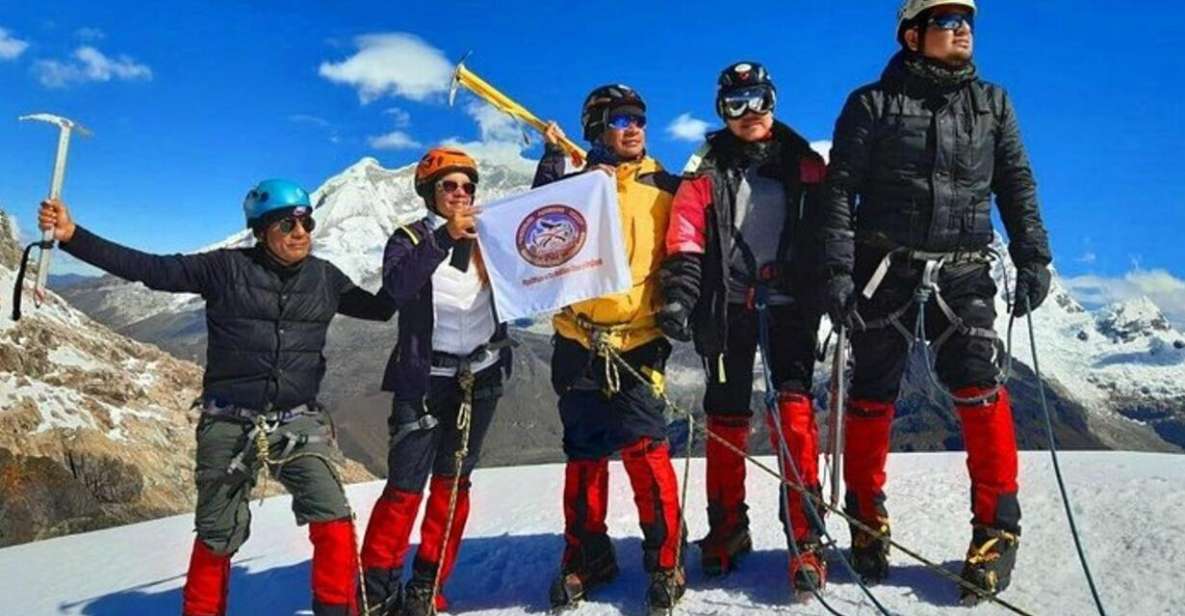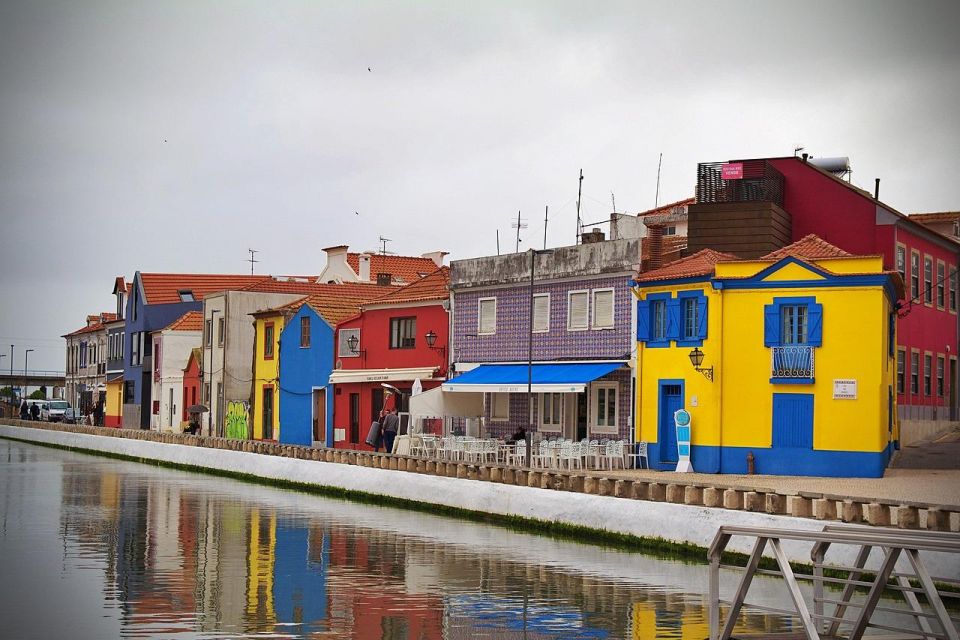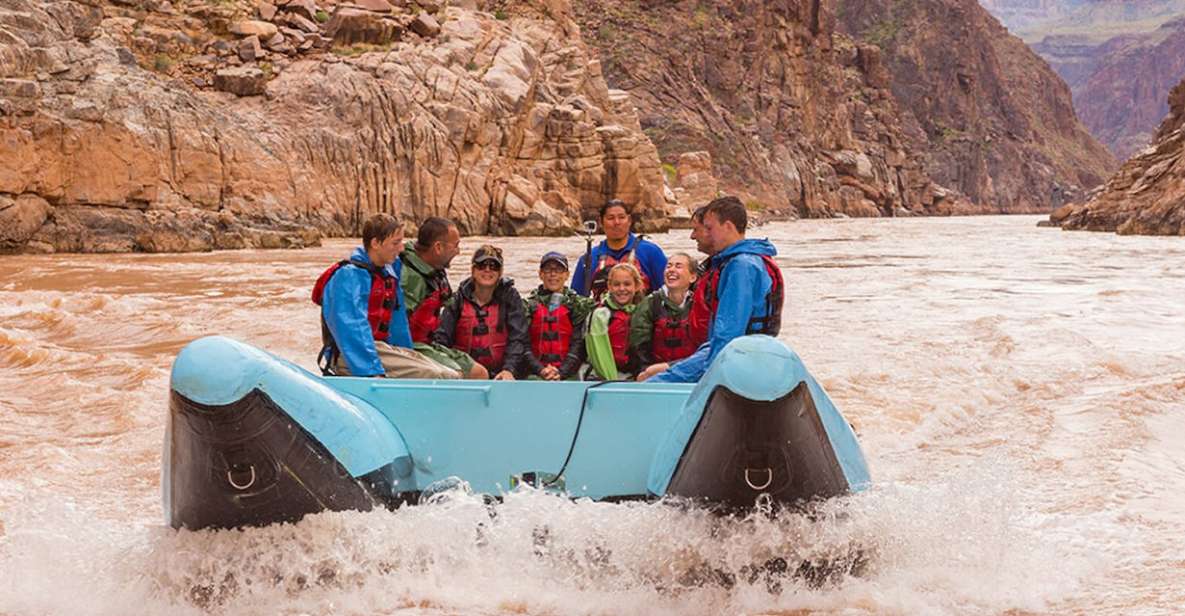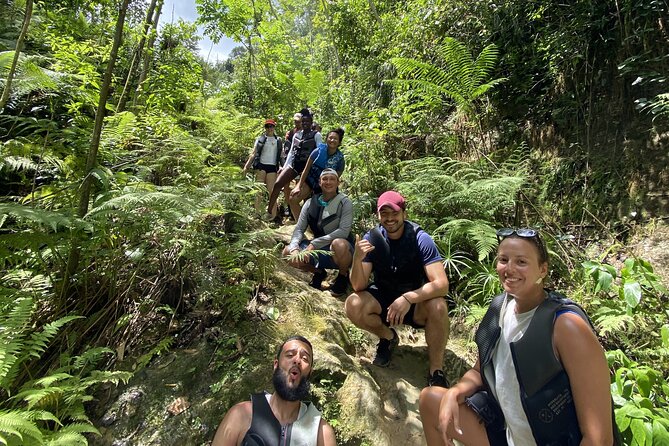The Annapurna Circuit Trek is a renowned 22-day journey that takes trekkers deep into the heart of Nepal’s majestic Himalayan range. Adventurers will be captivated by the region’s rich cultural tapestry, diverse ecosystems, and the dramatic landscapes of the world’s deepest gorge between the Annapurna and Dhaulagiri mountain ranges. While the trek poses a formidable challenge, the opportunity to experience cozy local guesthouses, natural hot springs, and the thrill of crossing the Thorong La Pass at over 5,400 meters makes this an unforgettable adventure. Proper preparation and safety protocols are essential to ensure a safe and memorable journey through this stunning Himalayan wonderland.
Key Points
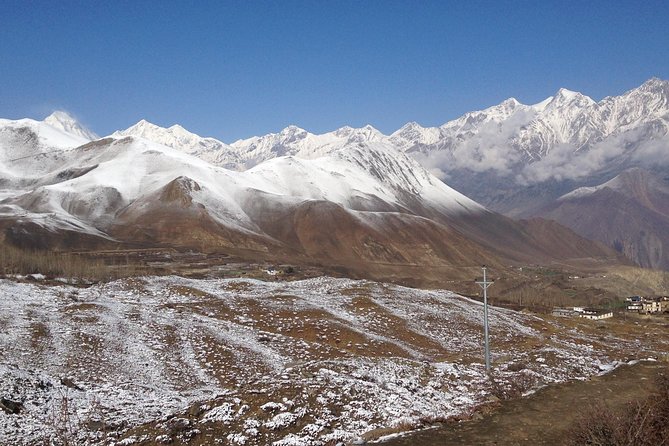
- The Annapurna Circuit Trek is a 22-day adventure that showcases Nepal’s rich heritage and panoramic Himalayan landscapes.
- The trek involves trekking through diverse ecosystems, including the world’s deepest gorge between Annapurna and Dhaulagiri.
- The trek requires a considerable physical challenge, with high altitudes, steep ascents, and long daily walking distances.
- Permits, such as the Trekkers Information Management System (TIMS) card and Annapurna Conservation Area Project (ACAP) permit, are required for the trek.
- The trek offers opportunities for customization, including shorter daily trekking distances or challenging high mountain passes.
It's also worth checking out some other tours and experiences nearby.
Overview and Highlights
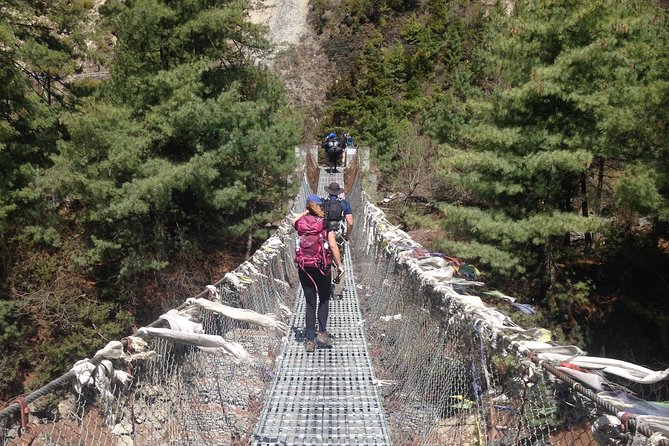
The Annapurna Circuit trek is a 22-day adventure that departs from Kathmandu, immersing travelers in Nepal’s rich heritage and the panoramic landscapes of the Himalayas.
Trekkers will marvel at the incredible beauty and biodiversity of the Himalayas, from lush forests to high-altitude meadows. The highlight is trekking through the world’s deepest gorge between two towering mountains.
After the challenging trek, participants can enjoy a well-deserved rest day relaxing in the natural hot springs in Tatopani.
This trekking package includes airport transfers, hotel accommodations, guided sightseeing, guesthouse stays during the trek, and a licensed English-speaking guide to ensure a seamless and unforgettable journey.
Itinerary and Accommodation
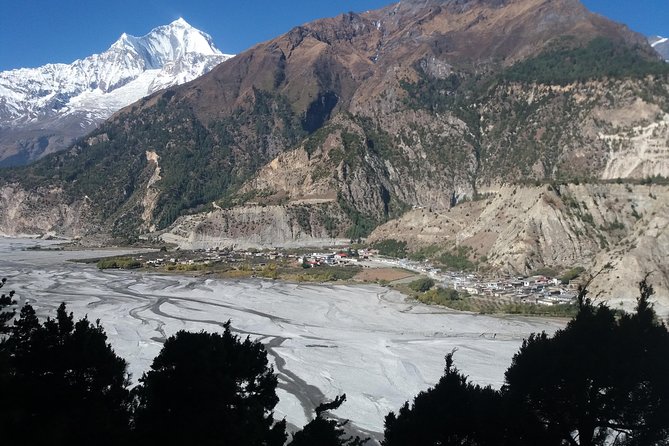
Spanning 22 days, the Annapurna Circuit trek commences in the vibrant capital of Kathmandu, where travelers can explore the city’s renowned UNESCO World Heritage sites before embarking on their Himalayan adventure. After acclimatizing, trekkers journey through scenic rural landscapes, passing by traditional villages and terraced farmlands.
The route winds through the world’s deepest gorge between the towering mountains of Annapurna and Dhaulagiri, offering awe-inspiring vistas. Accommodation during the trek is in cozy local guesthouses, where trekkers can enjoy the warm Nepali hospitality. The trek also includes a much-anticipated rest day in Tatopani, where travelers can rejuvenate in the natural hot springs.
The trek traverses diverse ecological zones, from lush rhododendron forests to high-altitude alpine meadows.
Trekkers can interact with the friendly Gurung and Thakali communities, learning about their unique cultures.
The challenging ascent to the Thorong La pass (5,416m/17,769ft) rewards adventurers with panoramic Himalayan panoramas.
Trekking Difficulty and Fitness
While the Annapurna Circuit trek offers a captivating journey through Nepal’s stunning landscapes, it also presents a considerable physical challenge that requires a good level of fitness and prior trekking experience.
The trek’s high altitudes, steep ascents, and long daily walking distances demand endurance and preparation from participants. Trekkers can expect to cover around 10-15 km per day, often ascending and descending over 1,000 meters.
The highest point, Thorong La Pass, reaches an elevation of 5,416 meters, which can cause altitude sickness if not properly acclimatized. Prospective trekkers should train with regular cardiovascular exercise and gradually build up their stamina before the trek.
With the right preparation, the Annapurna Circuit can be an incredibly rewarding and unforgettable experience.
Permits and Equipment
Obtaining the necessary permits is a crucial aspect of the Annapurna Circuit trek, as it ensures compliance with local regulations and provides access to restricted areas. Trekkers must procure a Trekkers Information Management System (TIMS) card and an Annapurna Conservation Area Project (ACAP) permit, which can be arranged through licensed trekking agencies or directly at the permit offices in Kathmandu and Pokhara.
The provided trekking equipment is designed to enhance the overall experience and ensure the safety of participants. This includes:
- High-quality hiking boots and socks to protect the feet
- Warm layers, such as jackets and thermal wear, to combat the cold temperatures
- Trekking poles to provide stability and reduce strain on the knees during the long hikes.
Meals and Dietary Restrictions
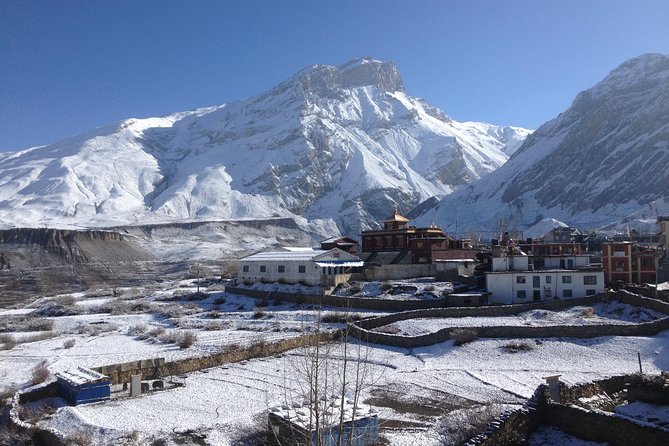
Along With the provided trekking equipment, the Annapurna Circuit trek also includes a comprehensive meal plan to sustain trekkers throughout their journey.
Meals are primarily Nepali-style, featuring hearty staples like dal (lentil stew), rice, and vegetable curries. Breakfast might include porridge, eggs, and Tibetan bread, while lunch and dinner options feature a mix of local and international dishes.
Special dietary needs can be accommodated with advance notice, whether you’re vegetarian, vegan, or have food allergies. The meals are designed to provide the necessary calories and nutrients to fuel trekkers as they navigate the challenging terrain of the Annapurna range.
Enjoy nourishing, locally-sourced meals that complement the incredible Himalayan scenery.
Safety and Emergency Procedures
The trek’s organizers take safety extremely seriously, ensuring trekkers’ well-being throughout the journey. They provide comprehensive emergency procedures, equipping guides with satellite phones and first-aid kits to handle any situation that may arise on the trail.
Trekkers receive detailed safety briefings before departing, covering essential topics like altitude sickness prevention and what to do in the event of an accident or medical emergency.
The safety protocols prioritize:
- Proactive risk management to avoid potential issues
- Prompt and efficient emergency response to mitigate any incidents
- Comprehensive medical support and evacuation procedures
These measures give trekkers peace of mind, allowing them to fully enjoy the stunning Himalayan landscapes without worrying about their well-being.
Packing List and Essentials
Packing the right gear is crucial for a successful Annapurna Circuit trek, as trekkers will encounter a variety of weather conditions and terrain throughout the journey.
Weatherproof layers like a down jacket, waterproof pants, and sturdy hiking boots are essential. Don’t forget a warm hat, gloves, and sun protection.
A good quality backpack, water bottle, and trekking poles can make the hike much more comfortable. Bring plenty of high-energy snacks and electrolyte tablets to stay fueled.
It’s also wise to pack a first-aid kit, headlamp, and any personal medications.
With the right preparation, trekkers can focus on enjoying the breathtaking views and seeing Nepal’s captivating culture.
Customization and Additional Activities
Customizing the Annapurna Circuit trek to match personal interests and fitness levels allows travelers to make the most of their journey. Travelers can choose to add side trips to explore sacred Buddhist monasteries, visit remote villages, or venture out on thrilling day hikes to scenic viewpoints. Those seeking a more moderate challenge can request shorter daily trekking distances, while adventurous trekkers may opt to tackle high mountain passes like the Thorong La at over 17,000 feet.
Some additional activities to consider include:
- Spending a day in Muktinath, a revered Hindu and Buddhist pilgrimage site
- Visiting the lakeside town of Pokhara for its stunning mountain views and vibrant culture
- Joining a cooking class to learn authentic Nepali cuisine
Here's a few more nearby tours and experiences we think you'll like.
Frequently Asked Questions
What Is the Best Time of Year to Do the Annapurna Circuit Trek?
The best time to do the Annapurna Circuit trek is typically between October and November or March and May. These months offer clear skies, mild temperatures, and the most favorable trekking conditions in the Himalayas.
How Difficult Is the Trek, and What Is the Altitude Range?
The trek is considered moderate to challenging, with an altitude range from around 4,300 to 5,416 meters (14,110 to 17,769 feet). Proper acclimatization and fitness are required, as the high elevations can be strenuous for some travelers.
Can I Extend the Trek to Include Additional Days or Side Trips?
Yes, travelers can extend the trek to include additional days or side trips. Many choose to add a visit to the Tilicho Lake or explore other nearby regions, allowing more time to immerse in the stunning Himalayan landscapes.
What Is the Weather Typically Like During the Trekking Season?
The weather during the trekking season is generally mild, with sunny days and cool nights. Temperatures range from around 15-25°C in the lower elevations, dropping to freezing at the higher passes. Rainfall is moderate, though weather can change rapidly in the mountains.
Are There Any Special Acclimatization or Altitude Sickness Precautions to Take?
Trekkers should gradually ascend to allow their bodies to adjust to the higher altitudes. Proper hydration, avoiding alcohol, and rest days are crucial. Guide-led acclimatization walks can help prevent altitude sickness and ensure a safe, enjoyable experience.
Not for you? Here's more of our most recent tour reviews happening neaby
- Everest 3 High Pass Trek – 19 Days
- Everest Base Camp Helicopter Tour
- Everest Base Camp Via Gokyo Lake Trek-18 Days
- Chitwan To Kathmandu Tourist Bus
- Kathmandu: Nagarkot Sunrise and Bhaktapur Sightseeing Tour
- Full Day Kathmandu Sightseeing to UNESCO Heritage Site
- Kathmandu Pokhara Chitwan Tour
- Trekking: in Nepal With a Francophone Guide in Nepal
- Chandragiri Cable Car Self Guided Private Tour
- Everest: 16 Day Trek to Everest Base Camp
- Helicopter Return Everest Base Camp Trek, KTM-LUKLA & Gorakshep-KTM by Heli
- Kathmandu Heritage Sites Day Tour
- 1 Day Yoga and Meditation Retreats in Kathmandu
- Everest Base Camp Trek – 14 Days
- Naturally Nepal – 8 Day Tour
Recap
The Annapurna Circuit Trek is a once-in-a-lifetime experience that rewards trekkers with breathtaking Himalayan landscapes, culture, and a sense of personal accomplishment.
With meticulous planning, the right gear, and a spirit of adventure, trekkers can safely navigate this challenging yet rewarding journey, making memories that will last a lifetime.
Whether you’re seeking scenic vistas, cultural exploration, or personal growth, the Annapurna Circuit Trek delivers an unforgettable Himalayan odyssey.

